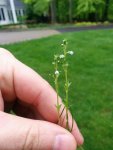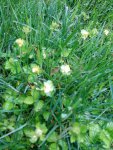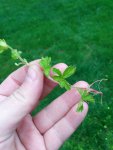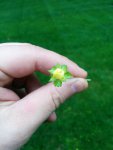Hi there.
Finally got me some lawn!!! I am in Northern NJ in the United States.
Before I take down these weeds, i would like to know what was there for my "notes"... I plan to keep a full journal of my gardening experience. Tried to identify these myself, but it is quite difficult.
There are two weed types in these photos. 3 pics of one, 1 pic of the other... I believe these are pretty common weeds.
Thanks.
Finally got me some lawn!!! I am in Northern NJ in the United States.
Before I take down these weeds, i would like to know what was there for my "notes"... I plan to keep a full journal of my gardening experience. Tried to identify these myself, but it is quite difficult.
There are two weed types in these photos. 3 pics of one, 1 pic of the other... I believe these are pretty common weeds.
Thanks.





